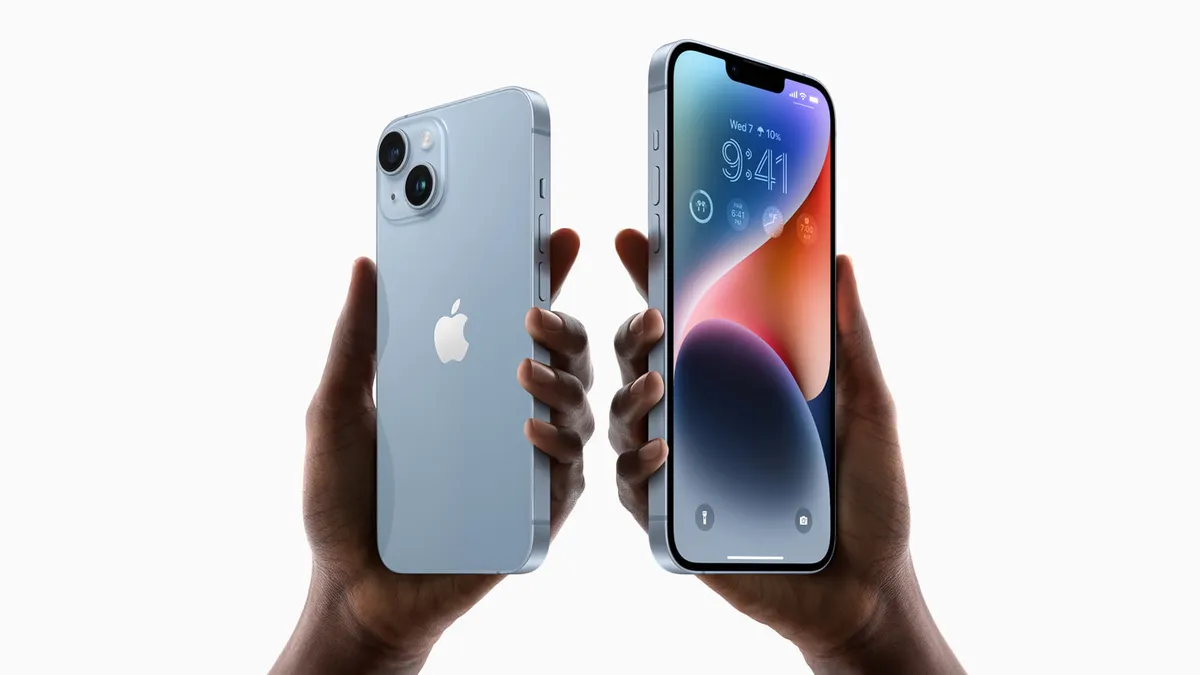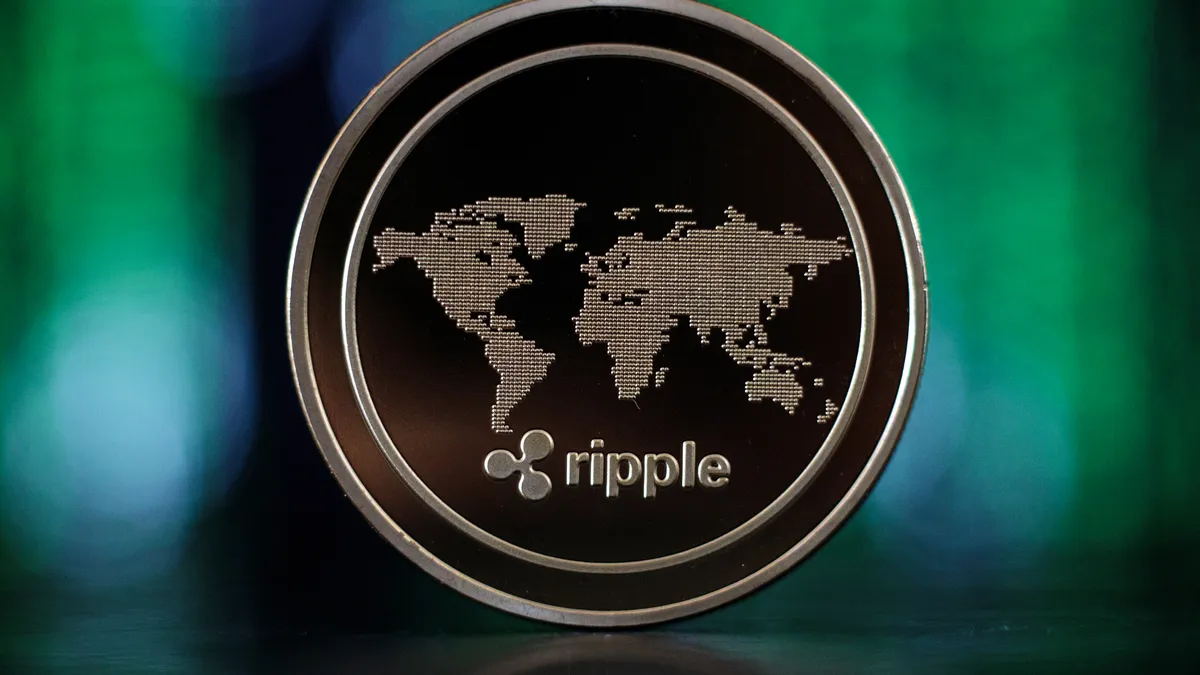Apple’s financial ecosystem could act as a building block for banks and fintechs as they try to modernize their offerings, grow their customers, and maintain a competitive edge in an ever-changing digital financial landscape, Richard Crone, CEO of independent payment advisory firm Crone Consulting, told Banking Dive.
Apple announced in October that its card holders will soon be able to deposit cash into a high-yield savings account by Goldman Sachs. As a follow-up, Apple launched its savings account in April, offering an annual percentage yield of 4.15%, with no fees attached, no minimum deposit, and no balance requirement. Though users can set up an account through the Wallet app on their iPhones, they cannot spend the money directly from the savings account. It must first be transferred either to a checking account or Apple Cash.
With the launch of Apple Wallet, which integrates Apple Pay, Apple Card, Apple Cash, Apple Savings, Apple Pay Later and Apple Tap to Pay, the tech giant launched more than just a payment platform — it launched a platform for financial management, according to Crone.
“So, what they've created is an all-in-one account structure with complete accessibility to your money through Apple Pay – a credit account, a prepaid account, a demand deposit account, and a savings or cash management account with a high yield rate. And that is truly unique in the marketplace,” Crone highlighted. “There isn't anybody else across the globe that's offering this kind of thing.”
This is made possible through Apple Wallet and the fact that the tech firm knows who the customer is through multifactor authentication and biometrics to reduce fraud associated with digital banking, he added.
While Morgan Stanley estimates Apple’s services revenue to hit $100 billion in 2023, Crone Consulting’s independent study estimates the combined revenue from all Apple Wallet related services to account for nearly $6 billion, according to the executive.
The total addressable market for Apple Wallet falls between $136 billion and $375 billion with 510 million monetizable daily active users, Crone noted.
“While Apple's expansion into financial services could be seen as a threat due to increased competition and potential revenue losses, it also represents a significant opportunity,” Crone noted.
The San Carlos, California-based independent advisory firm estimated that since the launch of Apple’s savings account in April, the tech giant gained over $1.2 billion in deposits, more in deposits than 92% of all the banks and credit unions in the U.S., in less than 30 days.
The thing that will eventually move the needle for Apple is adding offers and promotions that can be attributed to their platform, Crone said.
Learning from Apple
Apple’s financial services are integrated and interconnected, which can help foster user retention, Crone said.

Fintechs can learn from Apple’s simplified digital account opening and its accessibility to use and open new accounts from anywhere, he said.
Ron Shevlin, chief research officer at Cornerstone Advisors, said that though fintechs cannot replicate Apple’s strategy or compete with the tech giant since they don’t have the products that Apple has, like the iPhone, the fintechs can focus on the areas that Apple isn’t satisfying.
Apple’s closed ecosystem is its distinctive feature, which should get the fintechs thinking about using a more open strategy.
“Apple is just not going to become everything for everybody. It can become everything for a relatively small percentage of customers. The fintechs just need to really understand and stick to their strategy, their approach, their differentiation, and their market,” Shevlin said. “Every fintech just needs to understand what their value proposition is, how it relates, how they are going to compete with an Apple ... But they also are competing with the Squares, they are competing with the big banks that are competing with small banks, they're competing with that — everybody is competing with everybody.”
A threat to established fintechs?
Apple’s huge user base, a general shift toward digital and mobile banking, and trust in the tech companies act in favor of Apple, Crone noted.
A 2021 study by Statista revealed more than 2.1 billion consumers worldwide embraced mobile wallets for payments and money transfers, he said.
With the launch of platforms like Apple’s, it becomes necessary for traditional banks to collaborate with Apple, he said. The associated cost of 15 basis points per credit transaction and half a cent per debit transaction should be seen as a strategic investment — analogous to the operational expenses incurred for maintaining physical branches or installing ATMs, he said.
“If you don't have a digital-first mindset in delivering your services, it's hard to rejuvenate your customer base with younger cohorts because they demand the services,” Crone said. “And if you're on iOS, if you own an iPhone, you are one of the 2 billion users of an iPhone who demand to be able to do Apple Pay. So yes, it's a threat to the financial institutions that choose not to participate.”
Fintechs like challenger banks should feel threatened not only by Apple but by PayPal, Square and large banks, Shevlin said.
“Take Chime for example, which gets held out as being this great example, even Chime has a niche market, which tends to be low- to middle-income consumers,” Shevlin said.
“It's not a good base of consumers upon which to make a lot of money off of because they obviously don't spend as much because they don't have as much to spend and are not great lending prospects because their credit scores and creditworthiness is not as high as higher-income consumers. Without a broader strategy for monetizing those relationships, Chime and a lot of other fintechs are hurting,” he added.
The market is demonstrating these challenges right now – with the shutting down of Daylight, a fintech that served the LGBTQ community, layoffs at Aspiration, a climate-conscious neobank, and the sale of Kinly, a fintech focused on Black Americans, to Greenwood.
“The neobank/challenger banks are hitting a wall on growth, and obviously the funding to keep them alive is hard so, they should feel threatened by not just Apple, anybody out there with some presence in the market and strong financials,” Shevlin said.






















